How To: Incline Barbell Bench Press
3 Golden Rules! (Made Better!)
Today we’re going to go over the 3 golden rules when performing a barbell incline bench press.
Golden Rule #1: Keep A Shoulder-Width Grip! (Or JUST Outside)
I know some of you will say that with a wider grip you can bench more weight, but when you have a wider grip on this exercise when using a barbell, you’re not going to get that much of a flex at the top of the movement. It should go without saying that the more you bring your hands in, the more flex you get in your chest. Also, adduction is one of the functions of the chest, which means if you’re feeling that flex at the top, you’re going to get more muscle activation for more muscle damage and more growth, even if you can bench a little more when doing the wider grip. Overloading with more weight is USELESS for MUSCLE GROWTH if you’re getting LESS CHEST MUSCLE engagement.

You’re also going to have more control over the exercise with a shoulder-width (or just outside shoulder-width) grip, and you’re going to be able to keep your elbows under your wrists allowing you to really focus and push through with your triceps as well. When you get under the barbell, you want to put your finger tips on the gnarling, and personally I like to use my thumbs, and put them right on the end of the gnarling to get my grip position. Then, after lifting the barbell off the rack, as you do your repetitions you want to keep your elbows UNDER your wrists, and then as you press back up, your elbows should stay under your wrists as well.
You want to make sure that as you do this movement, as you come down, you don’t flare your elbows out to the side, and then push that way as well. You’re going to lose a lot of power if you do that, and you’re also going to place a lot of unwanted tension in your shoulders. Constant elbow flare is the main reason lifters get SHOULDER PAIN from this movement and can’t progress with more weight.
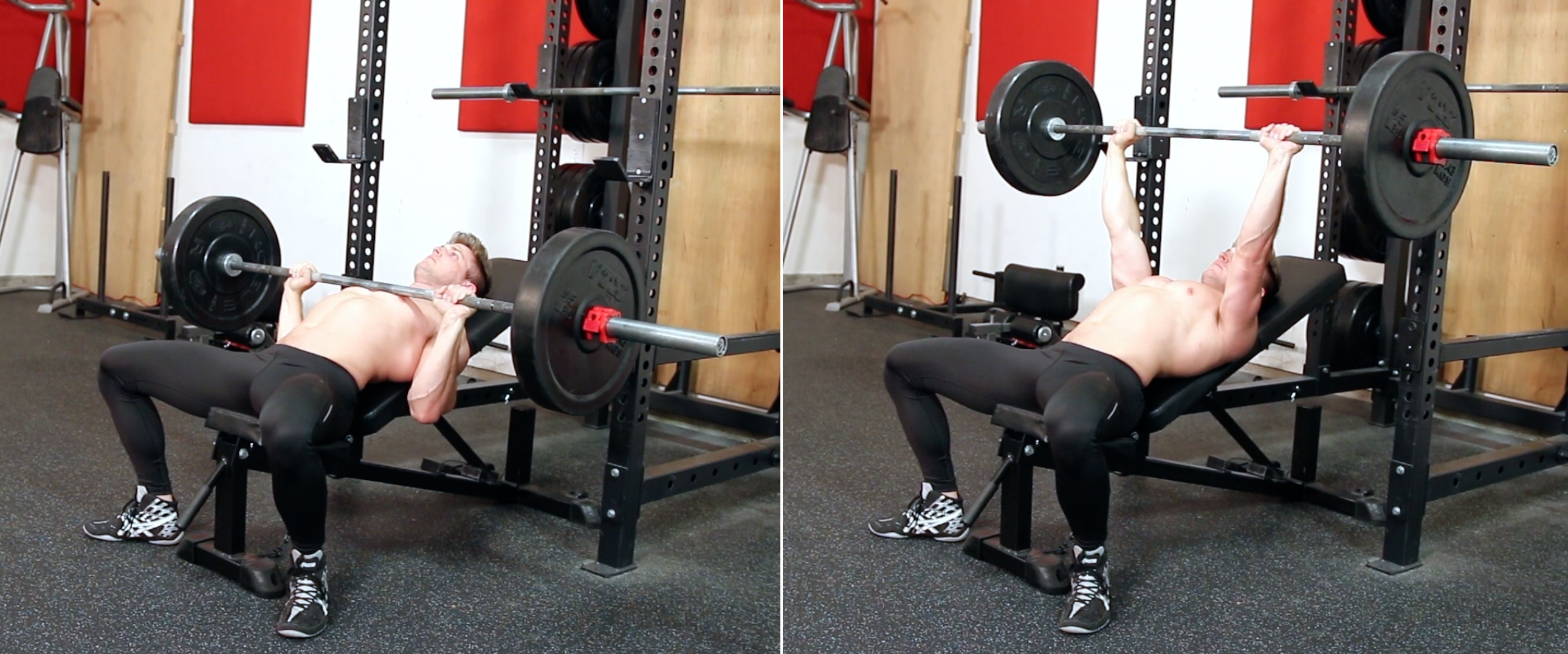
Golden Rule #2: Keep Shoulders Retracted & Depressed!
I notice the most common thing that happens here is a lot of people will retract, depress, lean back and get into position. But sometimes the j-hooks are too high on benches in the gym, or this can just happen in general. The problem is that when you try to press the weight off the j-hooks, what happens is you lift the weight, then push it up by using your shoulders too much to help. What happens once you use your shoulders to help you is you un-pack them, and then you start performing your repetitions with your back flat on the bench versus having your shoulder blades retracted and depressed down.
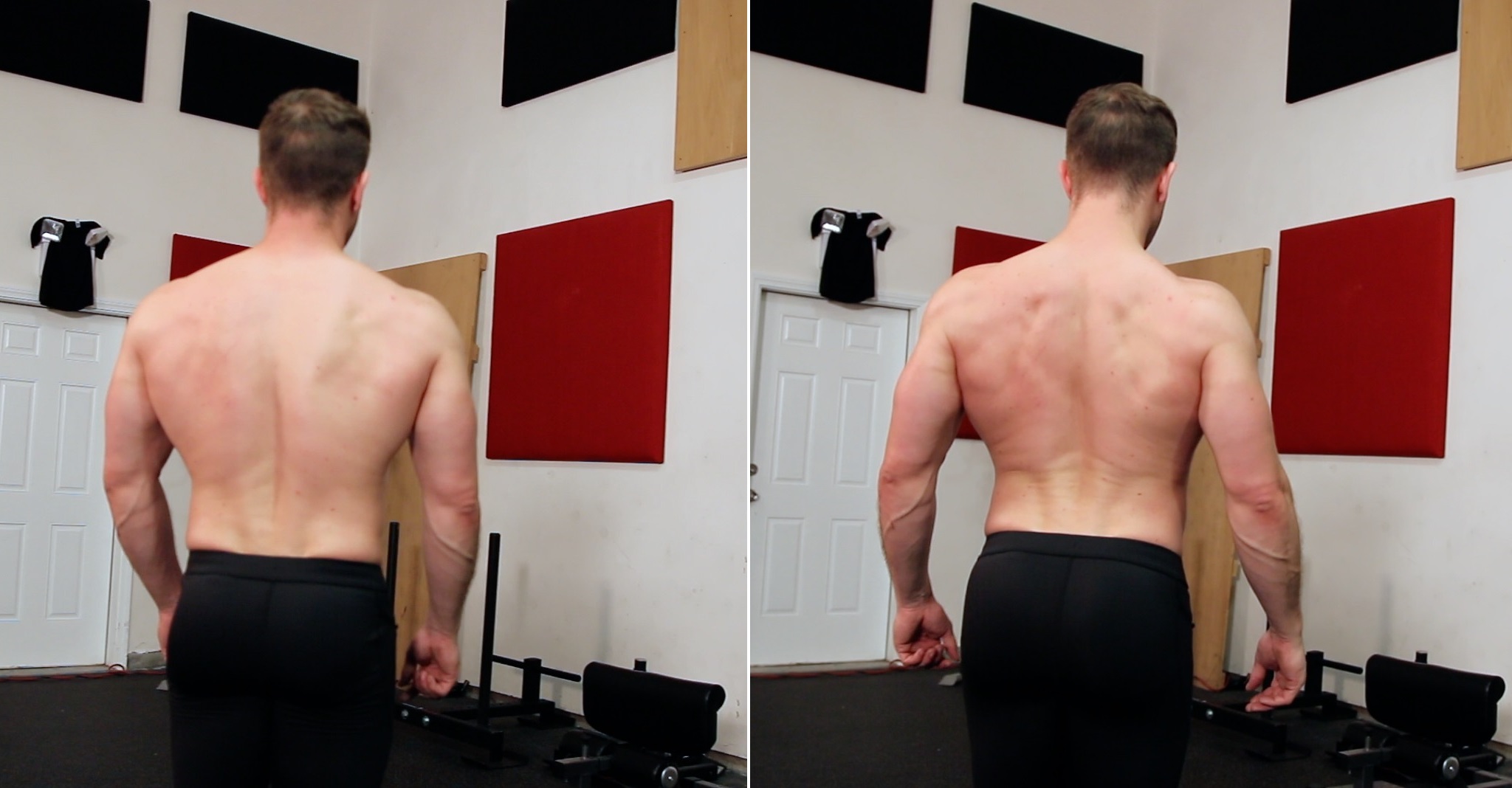
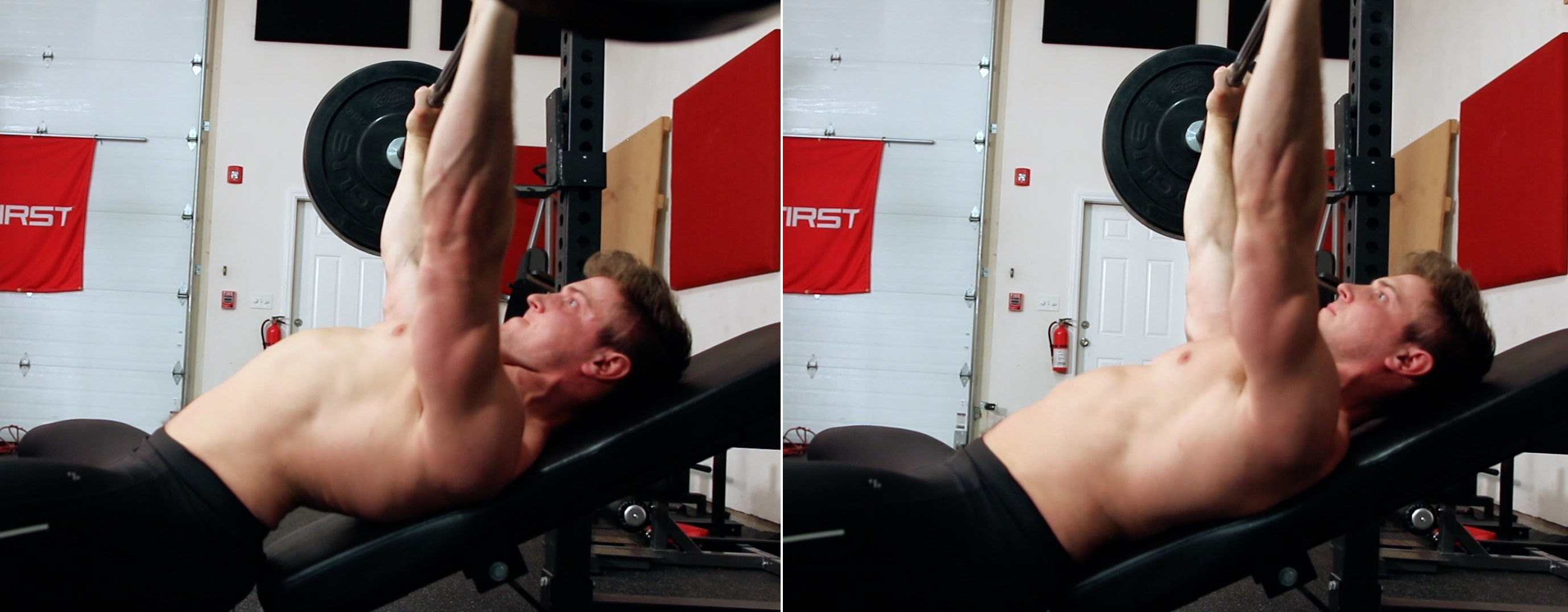
You then start to lose a lot of that pushing power that you had, and you can also start to transfer a bit more of the exercise into your shoulders, versus keeping it all in your chest. If that happens to you, and you pay attention, just hold the weight above you, and try to reset your shoulders. Once you reset your shoulders and they’re nice and packed, then you’ll be able to bench, and feel it all in your chest and not in your shoulders at all. There is a big difference between having your shoulders packed or un-packed, and the best solution would be to learn how to un-rack WITHOUT breaking your form. It just takes time!
Golden Rule #3: Engage Your Lower Body & Core!
Your lower body and your core are VITAL to this movement. Yes this is an upper body movement and you’re pressing through your chest and your arms, but if your core is loose, and your feet are not firmly planted on the ground, then you don’t have a solid foundation to be able to press more weight comfortably.
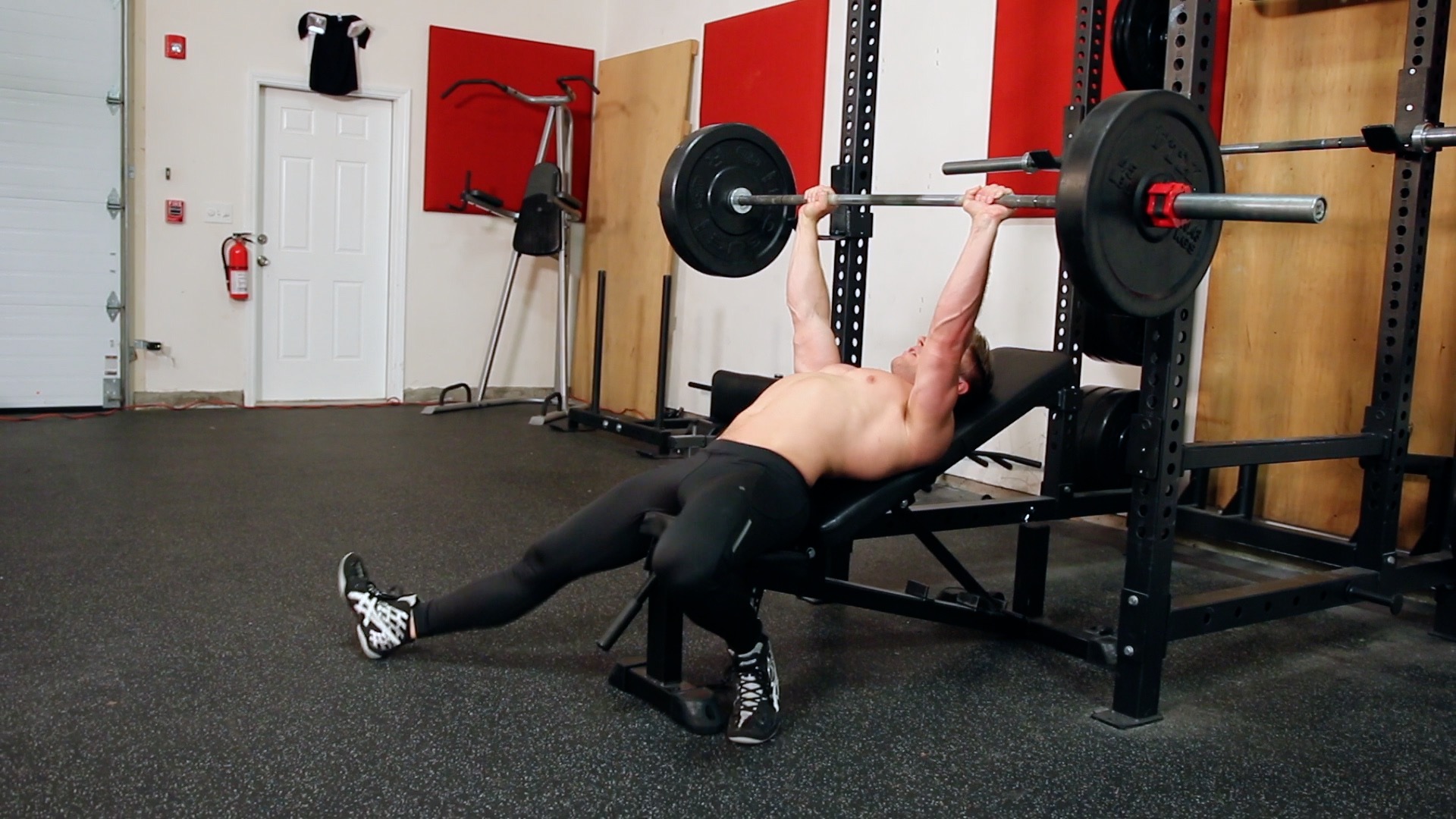
What I mean by that is, when you’re pressing the weight, you have your shoulders packed, you lift it off the rack, but you don’t want your legs to be flailing around everywhere. This is going to create some instability, and not the kind of instability you want. You want to be nice and tight, either on your toes or with your feet flat and knees pushed out. As you push your knees out, you should arch your back, and then take in a breath through your nose, and flex that core as hard as you can. Also flex your glutes, and that creates a solid foundation that’s going to allow you to press heavier and heavier weight as you get better with the movement. As soon as you start to feel your core loosen up and your lower body loosen up, reset yourself, don’t just start pressing repetitions with loose legs and a loose core.
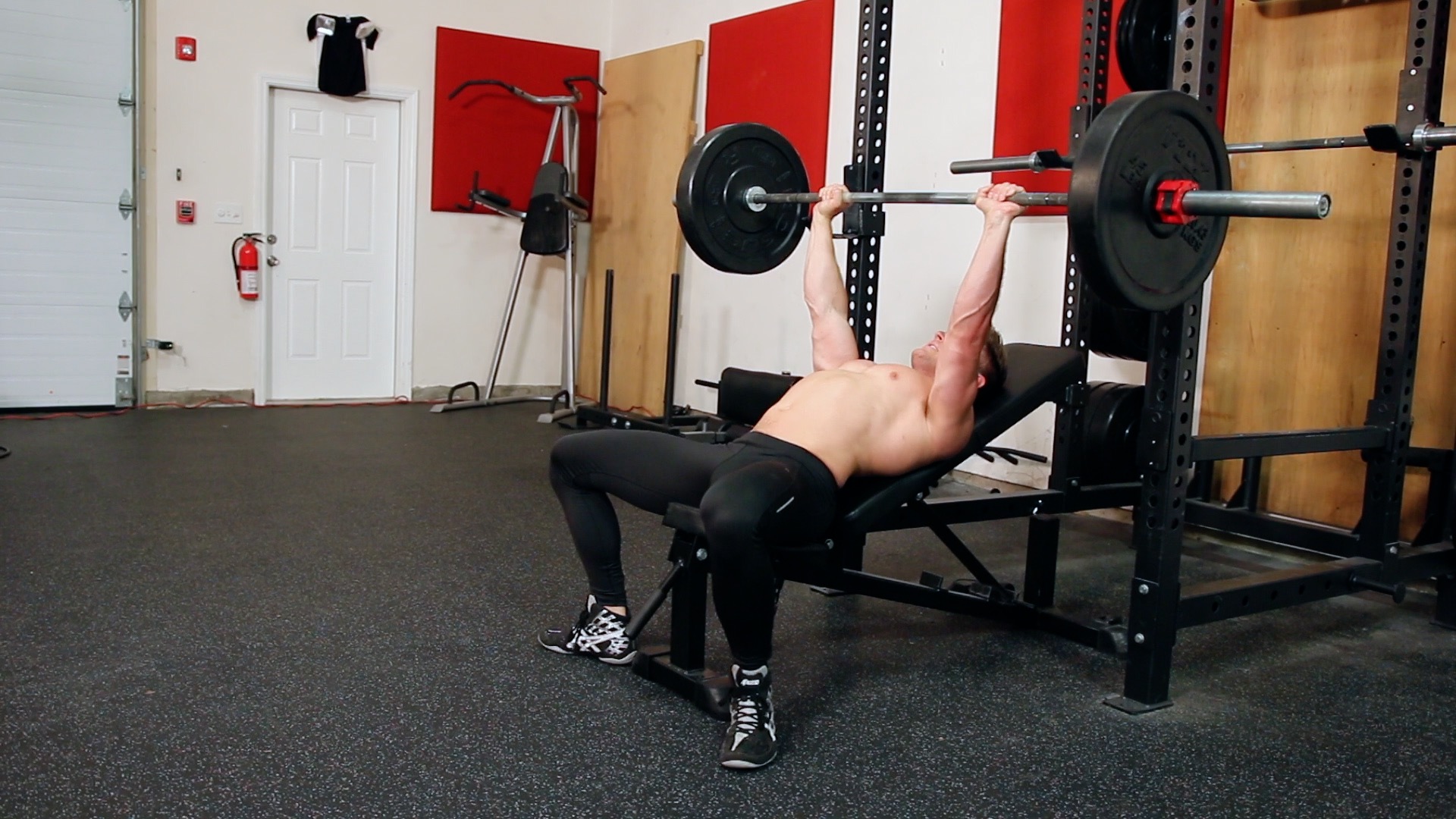
Bonus Tip!
A lot of times benches in the gym can be very slippery. If your bench is slippery, that’s going to cause your butt to slide, which is going to cause your core to become soft, and you’re going to lose your footing. You can take some bungees, and then wrap them around the seat, and your butt will stick to these real good! So if you’re sliding on your bench, go find a few bungees, put them on, and that’s going to help you stick much better so that when you’re pressing heavier loads, your butt doesn’t start sliding all the way forward. That can become very dangerous, especially if you’re maxing out or trying to squeeze out those last few repetitions.

Conclusion
I hope these golden rules help you start incline bench pressing more weight, avoid injuries, and helps you take your upper chest growth to the next level! Utilizing these tips with the Cheat & Recover program will definitely give you some amazing gains!








